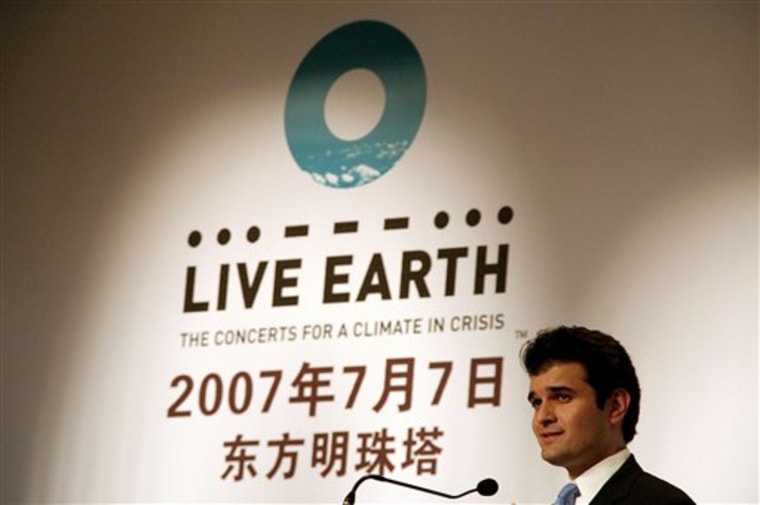It would play right into the hands of critics if the seven Live Earth concerts to be staged worldwide July 7 were to come off in an unfriendly environmental way. And it’s probably fair that no concerts in history will be more closely monitored for how well they manage power and waste.
Live Earth producers want the world to watch what they do. “We want to make the concerts themselves part of the solution,” Live Earth’s Yusef Robb says. “What we’re working very hard to do is something that has never been done before: establish a new green event standard that Live Earth will not only follow but hopefully future live events will follow as well.”
The concerts will be built “from the ground up to be as green as possible,” Robb says. “If there is a choice between a dirty lightbulb or a greener lightbulb to light the stage, we’re working to find the technology that can generate the least amount of carbon. If there’s a choice between two cups at a concessions stand, we want to identify the best one that not only makes a beer taste good but can also be recycled and didn’t use a lot of carbon to produce in the first place.”
Obviously, there will be some carbon that Live Earth will not be able to “design out” of the process, Robb says. “That’s the reality of life in the 21st century. So we’ll offset any remaining emissions.”
'Greening' consultant
Enter environmental adviser John Rego. Working primarily with corporate “greening” consultant Brand Neutral, as well as independent nonprofits the Climate Group and consultants Seven-Star and Meeting Strategies Worldwide, Rego oversees the Live Earth Global Green Team.
“One of the key objectives of our work is to gather best practices and create a ’greener’ recipe for the industry going forward,” Rego says. “The three main topics we focus on are energy, waste and transport, which are your three main carbon emitters worldwide, but also in a live event.”
The diversity of the venues in which Live Earth will be staged is not only a challenge but a benefit, Rego says. ”There’s not one model that can be used across all of them,” he says. “We have stadiums that are 30-plus years old and stadiums that are brand-new and just renovated, so obviously different challenges exist there.”
In Rio de Janeiro, Brazil, a million people are expected on Copacabana Beach for a free concert. The Shanghai show is an open event in the middle of a city. In South Africa, the venue is a green field about 40 miles outside Johannesburg.
Rego wants concert producers worldwide to gain confidence that their generators, for example, can run well on biodiesel. ”It’s also about figuring out how your generator setup should be designed -- the process of setting up the energy sources so the minimum amount of fuel and emissions will actually be used,” he says.
The other key component is waste management. “If we’re composting at the venues, which we’re planning on doing in Johannesburg and Rio, it is making sure the cups and plastics we have can be composted,” Rego says. “It’s about looking at the entire life cycle of how all this material works through an actual event.”
Lowering air conditioner
Rego says one Live Earth show has already secured 100 percent green power (wind and solar). Another venue will raise the temperature slightly to reduce the use of air conditioning. “We don’t want to (name) the venue because it will probably never be noticed by the audience,” Rego says, “and that is the point.”
Live Earth is going to significant lengths to actually quantify how green it will be, i.e., its carbon calculation. It is also gearing up for its carbon audit.
“We are looking at setting up boundaries and going through the processes and methodology of how we’re going to calculate this stuff so we have a clear understanding of what our carbon footprint is going to be,” Rego says. “All of this will be in our final report after the event and shown transparently, setting benchmarks again for the industry saying, ’This is how green we were, can you be greener?”’
It all comes back to the Live Earth mission. “We’re doing this to inspire and motivate action, and in essence my goal is to inspire action from the industry,” Rego says. “This legacy, and making sure that it is followed by tens of thousands of live events that occur every year — that impact outweighs any sort of impact we could have on the day of the event.”
